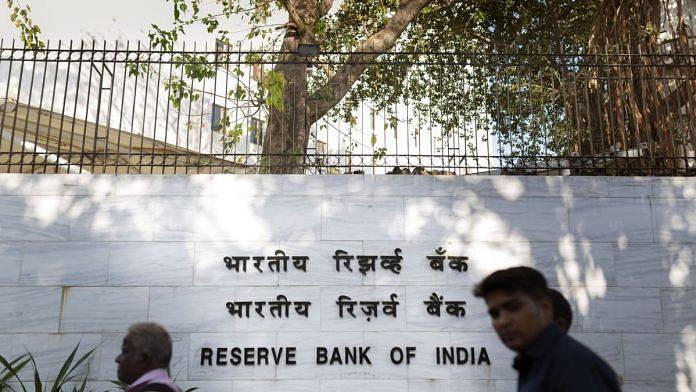Mumbai: The much-awaited loan restructuring guidelines announced by the Reserve Bank of India, based on the recommendations of the expert panel headed by veteran banker K.V. Kamath, are being seen as “stringent”, as most stressed firms may not be able to avail of the facility.
The committee noted that the Covid-19 pandemic has resulted in the stress across sectors with varying intensity — mild, moderate and severe. The panel identified 26 such sectors and suggested five financial parameters that should be taken into account by the lenders for debt restructuring.
But financial experts and brokerage firms say the parameters, such as a debt service coverage ratio (DSCR) of 1 or above, and a requirement for investment grade or ‘RP4’ rating, will keep many firms out of the ambit of debt recast.
The Kamath committee submitted its report to the RBI on 4 September, and its recommendations were accepted in totality and announced within one working day. With economic growth falling to a record 23.9 per cent in the first quarter of financial year 2020-21, a debt recast assumed significance as the aim was to bring companies out of stress with some hand-holding.
The panel suggested financial parameters for debt recast for sectors like power, construction, iron & steel, roads, real estate, wholesale trading, textiles, consumer durables, aviation, logistics, hotels and restaurants, among others. Banks also have the option to offer debt recast to a company which is not part of these 26 sectors, but should have a board-approved plan for such cases.
The committee also said in its report that about 70 per cent of banking sector loans have been impacted due to the Covid-19 pandemic, adding that about 45 per cent were stressed even before the pandemic, and only 30 per cent (or Rs 15.5 lakh crore) is impacted due to Covid-19 and the consequent lockdown. The 26 sectors it has identified for debt recast comprises around 30 per cent of the banking sector’s corporate loans.
Also read: Loan restructuring plan will help revive economy, RBI Governor Shaktikanta Das says
Debt service coverage ratio
The five financial parameters specified by the committee are indicators of leverage, liquidity and debt serviceability. A ceiling or floor has been mandated to decide the eligibility of a borrower while considering loan recast.
One of the parameters is debt service coverage ratio (DSCR), which indicates the debt servicing capacity of the borrower. DSCR is defined as addition of net cash accruals for the relevant year, along with interest and finance charges, divided by addition of current portion of long-term debt with interest and finance charges.
The committee has recommended that the current ratio (current assets divided by current liabilities, reflecting the liquidity position of the company) and DSCR in all eligible cases shall be 1.0 and above, and average DSCR shall be 1.2 and above.
This means the cash flow of the borrowers needs to be more than what is required to service debt. Bankers say as a result, not many companies will be eligible for loan restructuring.
Pratip Chaudhuri, former chairman of State Bank of India (SBI), said: “A better wholesome solution would be to increase the tenure of the loan. This will enable the borrower to repay the loan.”
ICICI Securities, in a note to its clients, said: “Stricter norms for restructuring coupled with limiting the maximum restructuring tenure at two years for the residual tenure would ensure only eligible businesses get restructured.”
Another brokerage house, BofA Securities, said the recommendations will induce a degree of uncertainty in the credit market as banks work out restructuring plans with their customers.
Bankers said one of reasons for the tight debt recast norms could be because of past experience when lenders failed to do proper diligence before restructuring a debt, which would have turned non-performing later.
Nomura Securities, meanwhile, said in a note: “Multiple financial parameters have been put in place to ensure restructuring may be more prudent and be restrictive to Covid-19-impacted and viable cases only, while subjectivity involved around cash flow projections does increase some scope of misuse as well in unviable cases.”
Also read: Why loan restructuring is a welcome move from RBI, and what govt now needs to do for borrowers
Rating requirement
The other major issue is that of the rating requirement. It has been mandated that to carry out a debt recast, the rating ‘RP4’, or investment grade rating, is required from RBI-approved rating agencies, in line with the banking regulator’s circular on debt restructuring (issued on 7 June 2019).
“I hope that rating agencies will also take some flexible and more progressive approach while rating the resolution plan. The current rating requirement is of RP4, which could be made a little liberal in the initial years, till the economy actually revives and green shoots are visible,” said Nirmal Gangwal, founder and managing partner at Brescon Advisors, a boutique investment banking firm specialising in corporate debt resolution.
The banking regulator has decided to maintain approval of 75 per cent of lenders by value and 60 per cent by value norm for the resolution plan. Bankers said recent experience suggests this has been a major hurdle in implementing the resolution plan, and given the unprecedentedness of the situation, there was a case to relax the norms.
Also read: Why loan restructuring is any day better than a moratorium — HDFC’s Deepak Parekh explains






